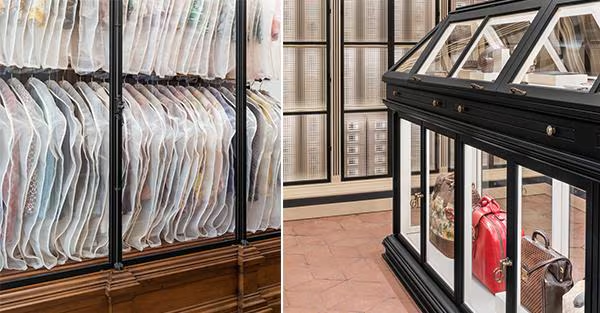Fashion archives are cultural treasures that encapsulate the rich heritage and creative evolution of iconic brands. While many fashion houses establish museums or dedicated spaces to showcase their history, these venues often remain exclusive, accessible only to a select few. This raises an important question: why aren’t these archives open to everyone?
The Cultural Significance of Fashion Archives
Fashion is not just about clothing; it’s a form of culture that reflects societal changes, artistic movements, and historical contexts. Each brand’s archive is a testament to its journey, preserving a wealth of knowledge and inspiration. However, many of these archives exist behind closed doors, limiting public engagement and understanding of the fashion industry's cultural impact.
The Gucci Example
 In recent years, numerous brands have taken steps to open their archives to the public. For instance, Gucci inaugurated its archive in Florence in 2021, thanks to a vision from Alessandro Michele. Housed in Palazzo Settimanni, this well-organized space invites dialogue between the past and present. It features five floors filled with thematic rooms that chronicle Gucci’s evolution, from home décor to vintage handbags and haute couture. However, despite its rich offerings, access remains restricted.
In recent years, numerous brands have taken steps to open their archives to the public. For instance, Gucci inaugurated its archive in Florence in 2021, thanks to a vision from Alessandro Michele. Housed in Palazzo Settimanni, this well-organized space invites dialogue between the past and present. It features five floors filled with thematic rooms that chronicle Gucci’s evolution, from home décor to vintage handbags and haute couture. However, despite its rich offerings, access remains restricted.
Dior's Approach
Conversely, Dior has embraced a more inclusive model. In 2022, the brand opened the Galerie Dior on Avenue Montaigne, dedicated to the history of the fashion house. Spanning 10,000 square meters, this museum invites all visitors to explore iconic pieces, miniaturized reproductions, and sketches that illustrate Dior's transformative role in women’s fashion. By creating an immersive experience, Dior not only showcases its legacy but also educates the public about its contributions to fashion.

Prada's Commitment to Preservation
Prada, too, has made significant strides in this area, dedicating various spaces in its Milan and Valvigna headquarters to its archives. With around 53,000 items cataloged by category, season, and brand, Prada's commitment to preserving its history is evident. The extensive footwear and leather goods collections, totaling over 60,000 pieces, exemplify the brand’s dedication to maintaining its heritage. However, access to these archives is still limited.
These examples highlight the extraordinary cultural heritage within fashion archives. The central question remains: if fashion is an essential cultural factor, why not open these archives to everyone? Making them accessible would not only enhance public understanding of fashion's role in society but also promote inclusivity within the industry.
Opening fashion archives to the public is a win-win situation. It fosters a deeper appreciation for the artistry and history of fashion while allowing brands to connect with their audience in meaningful ways. As custodians of cultural heritage, fashion houses should embrace their responsibility to share their stories with the world, ensuring that the legacy of fashion is preserved for future generations.



